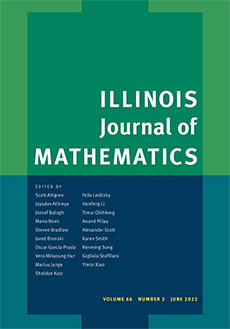Abstract
Several important results for $p$-summing operators, such as Pietsch’s composition formula and Grothendieck’s theorem, share the following form: there is an operator $T$ such that $S\circ T$ is $p$-summing whenever $S$ is $q$-summing. Such operators were called $(q,p)$-mixing by Pietsch, who studied them systematically. In the operator space setting, G. Pisier’s completely $p$-summing maps correspond to the $p$-summing operators between Banach spaces. A natural modification of the definition yields the notion of completely $(q,p)$-mixing maps, already introduced by K. L. Yew, which is the subject of this paper. Some basic properties of these maps are proved, as well as a couple of characterizations. A generalization of Yew’s operator space version of the Extrapolation theorem is obtained, via an interpolation-style theorem relating different completely $(q,p)$-mixing norms. Finally, some composition theorems for completely $p$-summing maps are proved.
Citation
Javier Alejandro Chávez-Domínguez. "Completely $(q,p)$-mixing maps." Illinois J. Math. 56 (4) 1169 - 1183, Winter 2012. https://doi.org/10.1215/ijm/1399395827
Information





